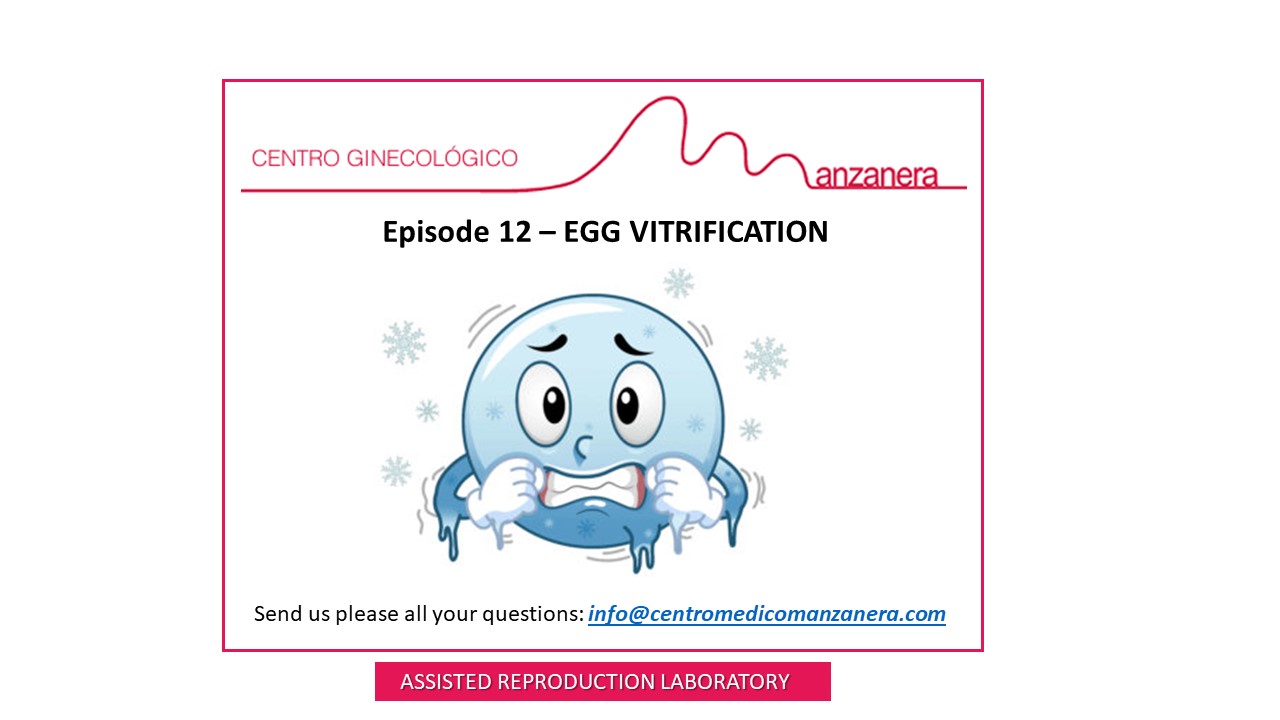Today we are talking about EGG VITRIFICATION. A very current topic due to the applications and advantages it can bring to the women’s current lifestyle and their personal situation.
As always, I am going to explain the most technical part of the process, that is, what happens in the assisted reproduction laboratory.
The egg vitrification process begins with the ovarian stimulation and the follicular puncture, as within other fertility treatments. Both processes are explained in more detail in the Episode 2 of this miniseries, but I will make a brief reminder.
The ovarian stimulation by taking some medications, aims to increase the number of retrieved eggs during a single cycle, compared to what would happen during a natural cycle. And once the necessary stimulation days are completed, these eggs are obtained within the follicular puncture.
When performing egg vitrification, once the eggs are retrieved, we do not fertilize them, but we “undress” them (remember that what we get from the puncture are -oocyte clusters-, which seem a “fried egg”, and we must eliminate the cells that cover it, as we saw in the fourth chapter.
In this way, after this process, we will be able to distinguish those eggs that are in a stadium of optimal maturity (metaphase two or MII), which will be finally vitrified.
As when freezing embryos (Chapter 11), vitrification is the technique we use to “save” the eggs and keep them in the laboratory submerged in liquid nitrogen (-196ºC).
This vitrification technique represents a record improvement over the classic freezing technique, that was used until a few years ago. The speed of the cooling process is the key, since it prevents the formation of ice crystals in the cells that can damage them and therefore affect their subsequent survival.
Once we have the vitrified eggs, it is as if the time had stopped for them, and therefore, in the future, when we want to use them, they will retain the same characteristics as at the time of their vitrification.
Hence the key in this whole process is this moment itself. Age is a vital factor. Our recommendation is to carry out the egg vitrification while the eggs still have all their qualities and not to choose this procedure as a last resort.
As we always tell you, each case is different, so I encourage you to send us your questions to info@centromedicomanzanera.com or to visit to the clinic for a free first consultation. You can also contact us through the following form https://centromedicomanzanera.com/en/formulario_en/
Happy day,
María Pombar Gómez
Embryologist
IMAGE: Lorelyn Medina
#assistedreproduction
#fertilitytreatment
#eggdonation
#IVF
#ICSI
#ivficsi
#artificialinsemination
#manzaneraclinic
#miniserieslaboratory
#episode12

